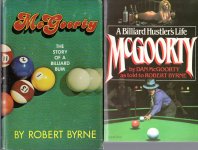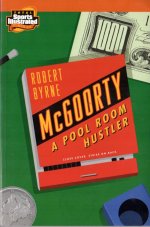Dan is addressing two-rail position plays, not kicks, and that there that is feel.
As to the diamonds,
Feel is better than a system because you have to instantaneously adapt each shot to the specific location of the balls and the condition of the table. Robert Byrnes's "McGoorty The Story of a Billiard Bum"" is one of the great books on billiards. Here's a story from it on Willie Hoppe:
#####
“In Hoppe’s book on how to play billiards is a long section on the diamond system, charts showing how to count the spots on the rails and figure out where to aim by using arithmetic. Now that is a joke, because he was not a system player. I went out to the Navy Pier one morning during the 1950 tournament to practice and there was Hoppe all alone in the hall. He had the book open and was shooting shots from the diagrams... trying out the system. He looked up at me and said, “You know, Dan, it works. But you need a perfect stroke.’
Those charts were put in the book by Bryon Schoeman and a lot of them are haywire. Sometimes one of my students will show me the book and say, ‘Look at this McGoorty. Hoppe says you can hit the rail here and end up there.’
‘My boy,’ I say, ‘it can’t be done. Those charts are just pretty pictures.’
Not only did Hoppe not use the diamond system, he had nothing to do with developing it. That was done by Copulus, Layton, and Clarence Jackson.
Guys like Hoppe, Cochran, and Schaefer, they knew the table so well, all the angles, all the returns, they didn’t need to use any system. They could get four out of two by elevating the cue a little and putting a touch of masse on the ball. The system? What system? f*ck the system.’”
#####
Lou Figueroa
![CropperCapture[15].jpg](/data/attachments/411/411534-b3f2c5e52b183106f152f01f5e0d7821.jpg?hash=s_LF5SsYMQ)
![CropperCapture[20].jpg](/data/attachments/411/411535-ecf72f75320bb426f62d27d8e8c0ae78.jpg?hash=7PcvdTILtC)
![CropperCapture[23].jpg CropperCapture[23].jpg](https://forums.azbilliards.com/data/attachments/411/411543-7ec75e0e136f789f7a16f4a176a7422e.jpg?hash=fsdeDhNveJ)

